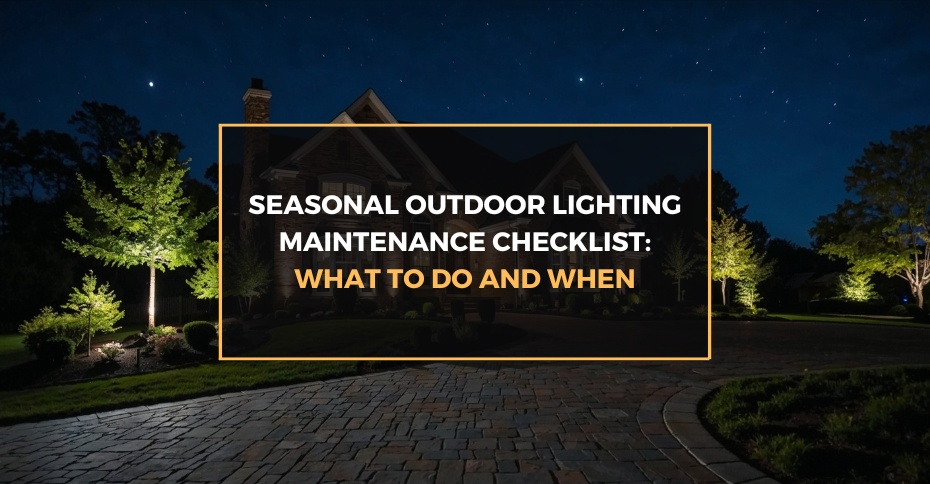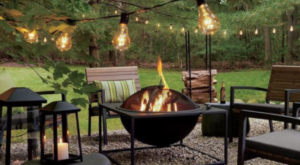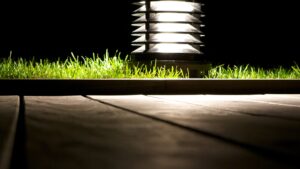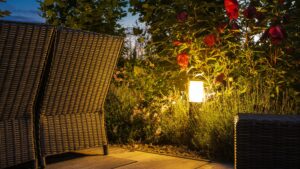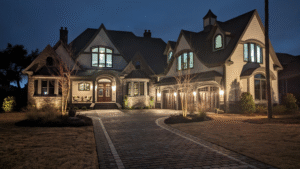Spring Maintenance Checklist
Inspect for Winter Damage
Inspecting your outdoor lighting for winter damage is essential. Freezing temperatures and snow can cause cracks in fixtures and damage to wires. Checking for moisture build-up inside the fixtures prevents electrical hazards. Replacing damaged parts early in the season ensures your lighting system remains functional throughout the year.
Clean Light Fixtures and Lenses
Cleaning light fixtures and lenses is necessary to remove dirt and debris that accumulate during winter. Use a soft cloth and mild detergent to avoid scratching the lenses. Clear lenses allow more light to pass through, improving visibility and aesthetic appeal. Regular cleaning also helps in identifying issues like rust or discoloration.
Check Wiring and Connections
Check wiring and connections for any signs of wear or corrosion. Cold weather can cause wires to become brittle, increasing the risk of breakage. Ensure all connections are tight to prevent power loss and potential fire hazards. Applying a protective sealant can safeguard connections from moisture and pests.
Replace Bulbs and Test Systems
Replacing bulbs and testing the system ensures that everything is working correctly. Older bulbs may dim or flicker, reducing the effectiveness of your lighting. Testing the entire system helps identify any hidden issues, like malfunctioning timers or faulty transformers. Proactive bulb replacement reduces the likelihood of unexpected outages.
Summer Maintenance Checklist
Monitor Lighting System Performance
Monitor lighting system performance regularly, especially during heavy usage periods. Summer gatherings and extended outdoor activities put extra demand on your lighting system. Check for any inconsistencies in light output to ensure safety and visibility. Addressing issues immediately prevents them from escalating into costly repairs.
Trim Foliage Around Fixtures
Trimming foliage around fixtures prevents shadows and enhances the overall lighting effect. Overgrown plants can obstruct light and cause overheating of fixtures. Regularly trimming plants ensures that your lighting system operates efficiently. This practice also helps in preventing pests from nesting around the fixtures.
Adjust Lighting for Longer Days
Adjust lighting for longer days to save energy and extend the life of your system. Consider using timers or smart controls to adjust the lighting schedule automatically. Properly timed lighting reduces unnecessary energy consumption. Adjustments also ensure your outdoor spaces are well-lit when needed, without excessive illumination.
Inspect for Insects and Pests
Inspect for insects and pests that may damage your lighting system. Bugs are attracted to light, and they can cause problems by nesting inside fixtures. Using pest-resistant fixtures or insect-repelling lights can minimize this issue. Regular inspection and cleaning can prevent infestations and maintain the integrity of your system.
Fall Maintenance Checklist
Clean Fixtures from Summer Debris
Cleaning fixtures from summer debris, such as dust and pollen, keeps your lighting effective. Use a gentle cleaner to remove dirt and grime from the lenses and housings. Proper cleaning enhances light output and extends the life of the fixtures. Addressing these issues in the fall prepares your system for the harsh winter months.
Check for Moisture Damage
Check for moisture damage caused by fall rains and early frost. Moisture can seep into fixtures and wiring, leading to short circuits or corrosion. Sealing any openings and ensuring fixtures are weatherproof helps protect your system. Taking these precautions prevents significant issues during the winter.
Adjust Lighting for Shorter Days
Adjust lighting for shorter days to ensure adequate illumination during early evenings. Reprogram timers to turn on the lights earlier and extend their duration. Proper adjustment keeps pathways and outdoor areas safe and well-lit. This is especially important as daylight hours decrease rapidly during fall.
Replace Old Bulbs and Batteries
Replacing old bulbs and batteries in solar lights prevents outages during the colder months. As temperatures drop, older batteries may lose their efficiency, leading to dim lights. Fresh bulbs and batteries ensure that your lighting system remains reliable. Addressing these small issues now avoids disruptions during winter.
Winter Maintenance Checklist
Protect Fixtures from Snow and Ice
Protect fixtures from snow and ice buildup by regularly clearing them off. Snow can block light and cause fixtures to overheat due to reduced ventilation. Gently brush off snow and ice, taking care not to damage the fixtures. Protective covers can also be used to shield lights from harsh conditions.
Inspect for Damage After Snowstorms
Inspect for damage after snowstorms, looking for broken fixtures or exposed wires. Heavy snow and ice can cause branches to fall, damaging lighting systems. Addressing these issues immediately prevents further deterioration and potential hazards. Keeping a close eye on the system helps maintain safety and functionality.
Ensure Pathway Lighting is Clear
Ensure pathway lighting is clear of snow and ice to prevent accidents. Illuminating walkways is crucial during the dark winter months to avoid slips and falls. Regularly clearing snow from around path lights ensures they remain visible and effective. Bright, clear pathways improve both safety and aesthetic appeal.
Monitor for Flickering or Outages
Monitor for flickering or outages, as these can be signs of underlying issues. Cold weather can affect the performance of both fixtures and bulbs. Flickering lights may indicate a loose connection or a failing bulb. Promptly addressing these issues helps maintain the integrity of your outdoor lighting maintenance plan throughout the winter season.
Additional Maintenance Tips for All Seasons
Regularly Check Timer Settings
Regularly checking timer settings ensures your lighting system operates efficiently. Power outages or seasonal changes can disrupt the timing, leading to inefficient operation. Adjusting timers according to the time of year maximizes energy savings and effectiveness. Properly set timers enhance the overall performance of your outdoor lighting.
Keep an Eye on Energy Consumption
Keep an eye on energy consumption by using energy-efficient bulbs and fixtures. LED lights and solar-powered options can significantly reduce electricity usage. Monitoring your energy bills can help detect inefficiencies or issues within the system. Upgrading to more efficient options can save money and reduce your environmental footprint.
Consider Upgrading to Smart Lighting
Consider upgrading to smart lighting for easier maintenance and control. Smart systems allow remote monitoring and adjustment of your lighting schedule. Automated alerts can notify you of issues, reducing the need for manual checks. These systems can simplify outdoor lighting maintenance and improve overall efficiency.
Routine Inspection of All Components
Routine inspection of all components is crucial for maintaining the health of your lighting system. Checking for wear and tear on fixtures, wiring, and controls helps identify issues early. Addressing minor problems before they become major repairs saves time and money. A proactive maintenance approach keeps your outdoor spaces safe and illuminated year-round.
Conclusion
Benefits of a year-round maintenance plan include improved safety, aesthetics, and cost savings. Consistent maintenance ensures that your outdoor lighting system remains functional and efficient. Preventative care reduces the need for costly repairs and prolongs the life of your system. A well-maintained lighting system enhances the beauty and security of your property in every season.
FAQs
How Often Should I Perform Outdoor Lighting Maintenance?
How often should I perform outdoor lighting maintenance? It’s recommended to perform a thorough inspection and maintenance at the beginning of each season. Regular monthly checks are also beneficial to catch minor issues early.
Can I Do Outdoor Lighting Maintenance Myself, or Should I Hire a Professional?
Can I do outdoor lighting maintenance myself, or should I hire a professional? While basic maintenance can be done by homeowners, complex issues like wiring problems or system upgrades should be handled by professionals to ensure safety.
What Are the Signs That My Outdoor Lighting Needs Repair?
What are the signs that my outdoor lighting needs repair? Common signs include flickering lights, dim illumination, and visible damage to fixtures or wiring. If you notice these issues, it’s important to address them promptly to prevent further damage.

